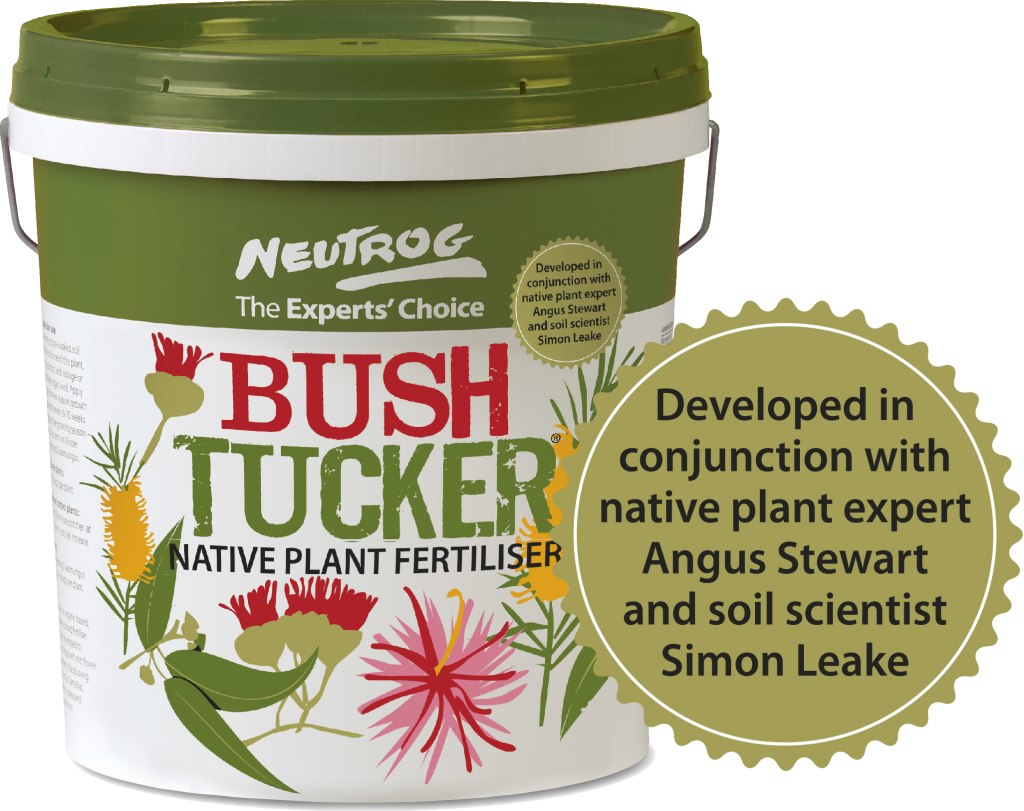AUTUMN FERTILISING OF AUSTRALIAN NATIVE PLANTS
I am busy feeding my kangaroo paws at the moment. They are putting on a lot of new vegetative growth through the autumn and winter which will set up spectacular flowering in spring. If you have not removed all the old flower stems from last spring/summer there is still time to cut them off along with the old foliage that produced them. This makes way for the little side shoots that will grow through autumn and winter to produce the next lot of flowers. And if you feed your plant now, a lot more of them will reach flowering size by next spring. Enjoy the journey!!
However, not every native plant should be fertilised at this time of year. There are those woody plants such as boronias and waratahs that are setting their flower buds now and feeding them may just encourage new vegetative growth that will hide the springtime flowers. Best to leave feeding these types of plants until spring, after you have pruned back to just behind the spent flowers. If you live in an area that gets early frosts, new growth is easily damaged, so hold off feeding plants that may cop an unseasonal frost.
Fertilising will help root growth, so if you have waited until the heat of summer has passed to plant new additions to your garden or to pot up plants, a dose of a good plant food will help them to establish a healthy root system, as well as give them a bit in reserve to cope over winter and for springtime flowering.
I recently sent out free samples of Neutrog Bush Tucker fertiliser, which I helped to develop with my good friend, soil scientist Simon Leake, especially for native plants. I have been getting fantastic results over a wide range of plants, particularly phosphorus sensitive plants like Grevillea ‘Royal Mantle’ and the NSW waratah, Telopea speciosissima and its various cultivars. Bush Tucker can be used on all native plants, whether they are phosphorus sensitive or not. Ask for it at your favourite nursery or large hardware shop.
I’d love to get feedback from newsletter readers who tried it. Email us at info@gardeningwithangus.com.au. Whatever the results I want to hear about your experience as we want to know how Bush Tucker is performing under your conditions wherever you are in Australia.
WHAT’S ON IN MAY- IN THE FOOTSTEPS OF THE GREAT PLANT HUNTERS- CHINA
I’m getting excited as I am packing my bags for another tour. I am leading a tour to one of the world’s great horticultural biodiversity hot spots in Yunnan on the western side of China, from the 11th to the 28th May 2016. This was the scene of much excitement for botanists and nurserymen around a hundred years ago, who explored and brought back many exotic plants that are now so familiar to gardeners – camellias, rhododendrons, magnolias,roses, primulas and lots more that we now think of as being very English plants. These new plants stimulated a great wave of breeding work which saw a host of lovely new plants. This breeding work continues today, with new and improved ones appearing every year.
China is also quite photographic, and with picturesque names like Jade Cloud Road, White Horse Snow Mountain, Tiger Leaping Gorge, and Jade Dragon Snow Mountain, I’m hoping to get some spectacular pictures to share with you for my next newsletter. I know a lot of you are pure and simple plant lovers and every plant was a wild flower somewhere so I am hoping to amaze you with the wonders of wild China!
NEW PLANT- EREMOPHILA ‘SILVER BALL’
I just love to see what my fellow Australian plant breeders are coming up with, and think the results of their work deserve lots of recognition, as there are some really useful and attractive plants being created. Bushland Flora in Victoria have created an amazing range of real beauties, some of which I included in my latest book ‘The Australian Native Garden’. This month I’d like to introduce you to one which originates from Western Australia, and belongs to an interesting and diverse genus, Eremophila, the fabulous Emu Bushes.
I love Australian native plants that perform many tasks in gardens and landscapes. Eremophila ‘Silver Ball’ is a great example of this . As the name indicates, it is one of those lovely grey leafed plants which are so useful for creating contrasts, and silver foliage will soften the landscape with subtle colour. The foliage also lasts well in the vase if you are into making your own flower arrangements.
The grey leaf colour is a clue that this plant has adapted well to withstand drought and salt, so it is good choice for windswept coastal gardens as well as drier inland gardens and landscapes. It also withstands frost, and has a natural round bun shape that merely needs a light trim once a year to keep it neat. The dense habit will crowd out weeds. There are a couple of things this plant doesn’t like, namely wet feet and high humidity, so if you have clay soil and a humid climate then this plant will struggle to reach its full glorious potential.
It bears tubular small yellow flowers that smaller nectar loving birds love. Growing to around a metre high and wide, it fits into today’s smaller gardens well. Ask at all good native plant nurseries for this easy care beauty.
Read more about ‘Silver Ball’ >>>>>






